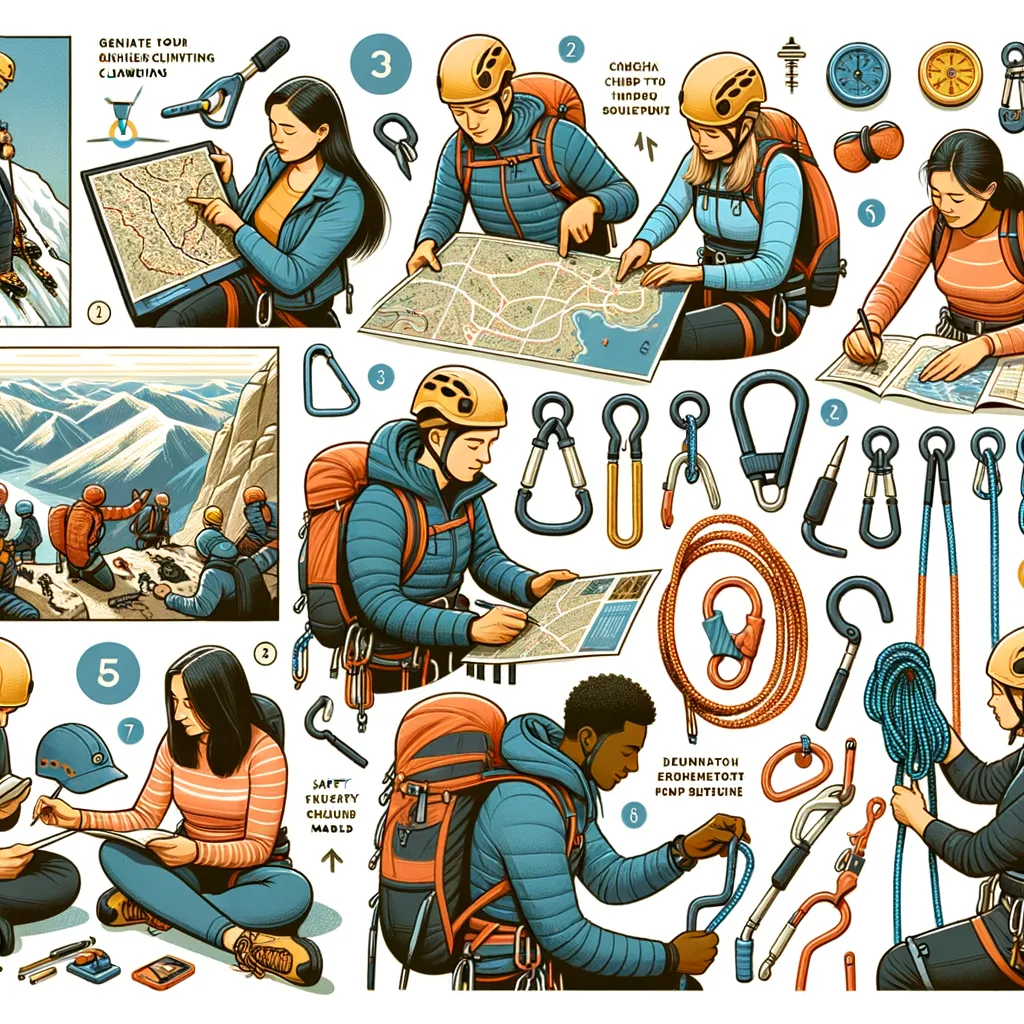How to Keep Your Campsite Safe from Wild Animals: A Comprehensive Guide for Parents
Welcome to our in-depth guide on keeping your campsite safe from wild animals! Camping is a fantastic way for families to bond, enjoy the great outdoors, and create lasting memories. However, it’s essential to remember that we share these spaces with wildlife. Ensuring your family’s safety and protecting our wild neighbors requires knowledge, respect, and a bit of preparation. Whether you’re planning your first camping trip or you’re a seasoned outdoor enthusiast seeking refreshed tips, this guide is tailored for parents looking to craft a safe camping experience for their little ones.
Understanding Your Environment
Before diving into the specifics of campsite safety, it’s crucial to understand the environment you’ll be stepping into. Different areas come with different wildlife, each with its behavior and level of risk. Familiarizing yourself with the local fauna can significantly improve your readiness. Resources such as local wildlife agencies, park rangers, and online forums specific to your camping location can provide valuable insights into what animals you might encounter.
Securing Food and Scented Items
Animals have a keen sense of smell, and the scents of food can attract them to your campsite. To mitigate this, proper food storage is paramount. Invest in bear-proof containers and coolers, and always store them away from your sleeping area. Encourage your children to eat in designated areas and clean up thoroughly afterward to avoid leaving any residues or scents that might attract wildlife. Remember, this precaution isn’t just for bears; even smaller animals like raccoons and squirrels can be a nuisance and potentially dangerous if they’re accustomed to human food.
Creating a Safe Sleeping Environment
Sleep is essential, especially after a day full of adventures. Ensuring your family sleeps safely away from any potential wildlife encounters is a top priority. Opt for a tent setup within clear, designated camping areas and avoid locations near trails or water sources, as these are common paths for animals. Teach your children the importance of keeping the tent closed at all times and store any items with strong scents, including toiletries, with your food supplies safely outside the tent.
This guide aims to equip you with the knowledge and tips needed to enjoy a safe, worry-free camping experience with your family. Stay tuned as we delve deeper into how to manage waste, choosing the correct campsite, and emergency preparedness in the next sections. Remember, the goal is not just to protect you and your family but also to preserve the natural beauty and inhabitants of our wonderful outdoor spaces. Camping responsibly ensures that these treasures will be there for future generations to enjoy.
https://en.wikipedia.org/wiki/Camping

How to Keep Your Campsite Safe from Wild Animals: Essential Guide for Parents
Embarking on a camping trip with your family is an adventure filled with potential memories and bonding moments. However, the presence of wildlife means you need to prepare and act responsibly to ensure everyone’s safety, including the animals’. Our comprehensive guide, tailored for parents, will navigate you through practical steps and essential knowledge to keep your campsite safe from wild animals.
1. Educate Your Family About Wildlife
Education is your first line of defense. Before you even pack your bags, sit down with your children and discuss the types of animals you might encounter. Understanding animal behavior will help prevent curious children from unintentionally inviting wildlife into your space. Engaging educational materials such as books, websites, and videos can make this learning process fun and engaging. Knowledge empowers children to make smart decisions if they encounter wildlife.
2. Choose the Right Campsite
Selecting an appropriate campsite is critical for safety. When you arrive, take a moment to inspect the site for signs of wildlife such as tracks or droppings. Opt for sites that are not too isolated but still respect nature. Make sure your camping spot is away from dense bushes and heavy animal trails. Elevated platforms or clear areas can offer better visibility and reduce the chances of an unexpected visitor.
3. Store Food and Scented Items Securely
Effective management of food and any scented item is crucial in minimizing wildlife attraction to your campsite. Utilize bear-proof containers and coolers for storing food, and never keep food in your tent. Educate your children on the importance of not leaving snacks or crumbs around. All cooking and eating should be done away from the sleeping area. Clean up thoroughly after meals to eliminate odors that could attract animals. Also, consider hanging trash and food at least 10 feet off the ground and 4 feet away from tree trunks if bear-proof containers aren’t available.
4. Maintain a Clean Campsite
A tidy campsite is a safe campsite. Educate your family about the importance of cleanliness. This goes beyond just food; scented lotions, toothpaste, and even certain types of sunscreen can attract wildlife. Ensure that everything with a scent is stored properly. Assign cleanup roles to each family member to ensure nothing is left out that might attract an animal. Regularly check the campsite for forgotten items or garbage that could pique an animal’s interest.
5. Be Prepared for Emergencies
Despite all precautions, it’s important to be prepared for any situation. Keep a whistle, bear spray (where legal and advised), and a first-aid kit readily accessible. Teaching your children how to use these tools safely and appropriately is essential. Familiarize yourself with the local wildlife laws and regulations, and know whom to contact if you encounter a dangerous animal. Photo copies or digital copies of emergency numbers and park maps should always be on hand.
Incorporating these practices into your camping routine will not only keep your family safe but also contribute to the well-being of the wildlife and their habitats. Respecting nature and understanding the balance between human activities and wildlife needs is fundamental. Initiatives like keeping your campsite clean and securely managing food items prevent unnecessary habituation of wildlife to human presence, a significant step in coexisting peacefully with the natural world.
Remember, safety is a continuous process that begins with preparation at home and extends throughout your entire camping trip. Ensuring the safety of your children and the protection of wild animals is an achievable goal with the right knowledge and actions. By teaching your children respect and care for nature, you’re setting the stage for not just a memorable camping experience but also a lifetime of outdoor appreciation and environmental stewardship. Embrace these guidelines, and enjoy the beautiful, safe, and harmonious camping experience your family deserves.
Find more tips on the Outoors. Find camping spots
Disclaimer
The articles available via our website provide general information only and we strongly urge readers to exercise caution and conduct their own thorough research and fact-checking. The information presented should not be taken as absolute truth, and, to the maximum extent permitted by law, we will not be held liable for any inaccuracies or errors in the content. It is essential for individuals to independently verify and validate the information before making any decisions or taking any actions based on the articles.



